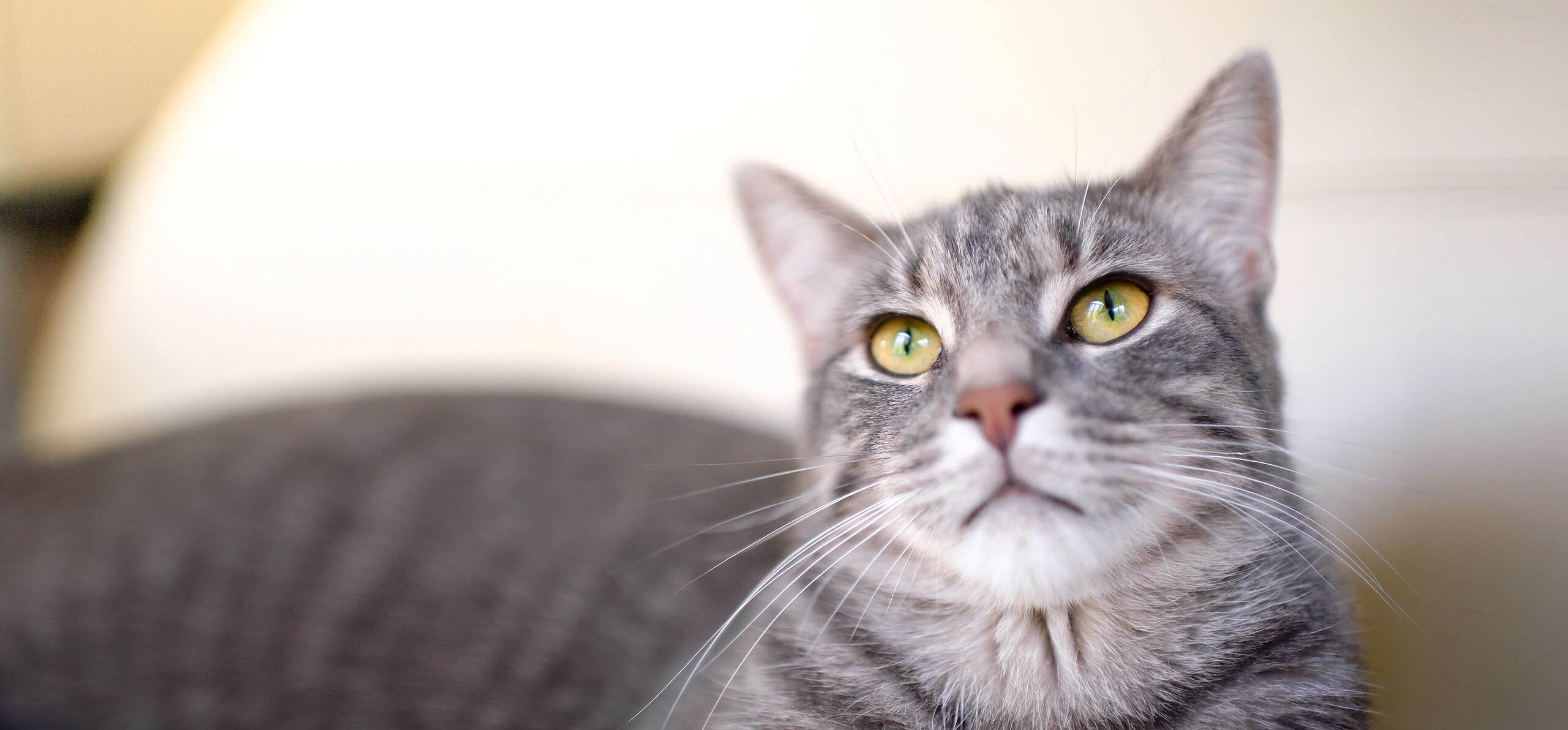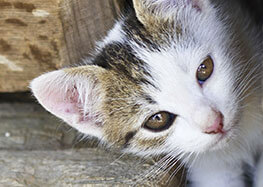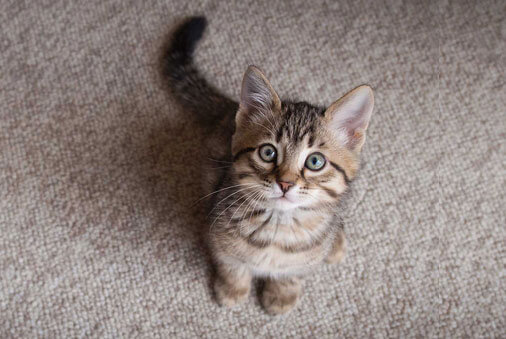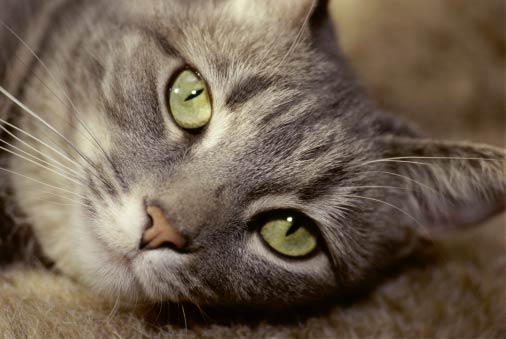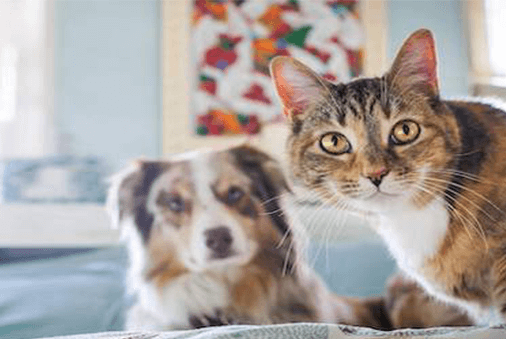Adult Cat: One to Seven years old
Congratulations, that adorable ball of fluff you are raising is now officially an adult. Imagine, at two years old she’ll have reached her social maturity.
Behavioral changes are common at this time. Cuddly kittens may turn into “I-want-to-be-alone” divas or once unaffectionate kittens may cling to your lap.
Power struggle
Multi-cat house? Just as kids vie for your attention as they age, cats may compete for alpha status as they grow up. Chasing, growling, hissing, and swatting are all normal behaviors for furry kids establishing their hierarchy in the family.
Practice patience and set some rules just as you would with your human kids. Give each cat their own space and fill it with plenty of toys to keep them busy.
Also, practice training them by rewarding good behavior with treats when they play nice, and separating them when there’s a problem.
New coat
Although your cat will physically stop growing when she’s one year old, she may fill out a little by the time she’s three. Also, her coat may change color. You may notice some white or gray hairs, and dark areas may get larger with age; this is common in Siamese cats as they get older and/or gain weight.
To help keep your cat’s coat shiny and healthy, feed them food that has an optimal balance of Omega 3 & 6 Fatty Acids.
Adult servings
Two meals a day is typical for adult felines, but ask your veterinarian to recommend the best feeding schedule for your cat’s specific health needs.
Even though you’ve transitioned to a high-quality adult cat food, one that has real meat as the main ingredient, you still need to watch your cat’s weight and keep an eye on her physical health.
Obesity has become a growing problem for all domestic pets. Remember, you should be able to feel your cat’s ribs and backbone. Like humans, cats’ abdomens are fat repositories, so check her belly for excess baggage.
The last thing you want is a fat cat, so feed your feline healthy food with balanced calories from proteins and fat to help maintain her ideal body weight.
You’ll also want a diet that’s nutritionally optimal for your cat’s activity level and body type. Cats who lay around all day don’t need as much energy from food as active cats who run and play. Either way, all cats require plenty of hydration so always keep fresh, clean water in their bowl every day.
Protein, please
Veggies are good for the whole family, but your cat also needs a protein-based diet in order to get essential amino acids, like taurine, which is necessary for healthy heart function, reproduction and normal vision.
We’re lucky. As mammals, we make taurine from the amino acids in our own bodies but cats are taurine-challenged: their bodies can’t manufacture it.
Healthy gums
Hopefully you started routine at-home dental care when your cat was just a kitten. However, it’s never too late to start, especially since the gum disease Gingivitis commonly occurs when cats are two years old.
A healthy diet with regular at-home and veterinary cleanings can help plaque from accumulating and cause gum irritation that may be Gingivitis.
If you haven’t been brushing your cat’s teeth and gums diligently since she was a kitten, be sure to ask your veterinarian if your cat needs a professional dental cleaning before you begin at-home oral care.
Leaving the litter behind
Even if your kitten consistently used her litter box from day one, you may see some changes in her bathroom behavior as she ages, such as urinating outside the box.
First you need to determine if her inappropriate urination is for territorial reasons or because she now dislikes her litter.
Address the situation immediately before it becomes habitual, eliminating the odor so the smell won’t reel her back to that spot for future bathroom breaks.
Always put a litter box on each floor of a multi-level home to make it convenient for your cat. Keep the minimum rule in mind: One litter box for each cat, plus an extra box; be sure the sides of the box are low enough for your cat to access easily.
Fastidious by nature, cats can teach us all something. They don’t like using a dirty litter box so clean it daily and completely scoop out and change their litter weekly.
If you’d like to try a new litter, do so gradually by mixing some new litter in with the older formula. Abrupt change can cause your cat to leave her litter box behind so transition slowly.
Consider a litter that’s specifically formulated to lure cats back to their boxes, such as natural herbal blends that have been proven to attract cats.
If your cat is still avoiding her litter box even after you’ve addressed behavioral issues, she may have a urinary tract infection or kidney disease, which is common in aging cats. See your veterinarian immediately to rule out possible health issues.
Hairy situation
Your cat’s been grooming herself since kitten-hood so “coughing up” hairballs is nothing new. Normally the fur she swallows is eliminated through her intestines; if not, it’s regurgitated (not actually coughed).
You can help mitigate this unpleasant condition by brushing and combing your cat’s coat regularly to remove loose hair before she ingests it into a hairball.
If your feline’s vomiting frequently, with or without hairballs, always consult your veterinarian. Your cat may need a change in her diet or a special hairball treatment. Sometimes natural, high-fiber food can keep the gastrointestinal tract moving properly, so look for healthy, anti-hairball formulas with high fiber.
If you want to try cat food specifically formulated to help reduce hairballs, Blue Buffalo offers a selection of hairball control formulas for adult cats.
Because cats are strict carnivores whose evolutionary diet is high in proteins and low in carbohydrates, many pet parents feel grain-free recipes with more meat upfront are the solution. Again, ask your veterinarian for the best recommendation based on your feline’s needs.
Remember, hairballs are nothing to sneeze at; they can become trapped in your cat’s intestinal tract and cause blockage, a more serious problem than occasional vomiting. Check your cat’s litter box to be sure they’re moving their bowels normally. If not, contact your veterinarian immediately.
Spiny Tongues
Did you know?
Cats’ tongues are like carpet sweepers thanks to tiny spines that pick up dirt in their fur. Even though they’re OCD about grooming and rarely need a bath, get into the habit of brushing or combing your cat. It helps keep their coat clean, mitigates shedding and helps reduce hairballs, too.
Play on
Just because your cat is more mature, doesn’t mean she’s outgrown her toys.
Keep physically and mentally stimulating your adult feline with enrichment activities and toys, like balls and stick toys that motivate her to hop and jump. Unlike human toddlers, climbing should be encouraged so keep plenty of cat structures around for her to scale.
One way to keep your feline moving is to hide healthy treats at different levels in your home so she has to climb to find them. Be careful if you have dogs and human babies around who could also discover these tempting-looking goodies.
Is your cat 8 years or older? Learn about the next important stage in your cat’s life.

